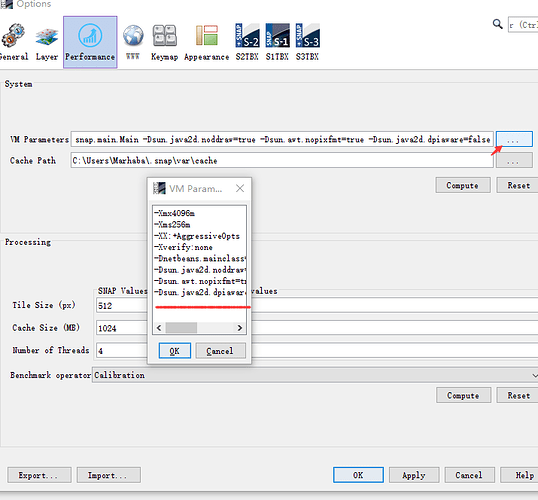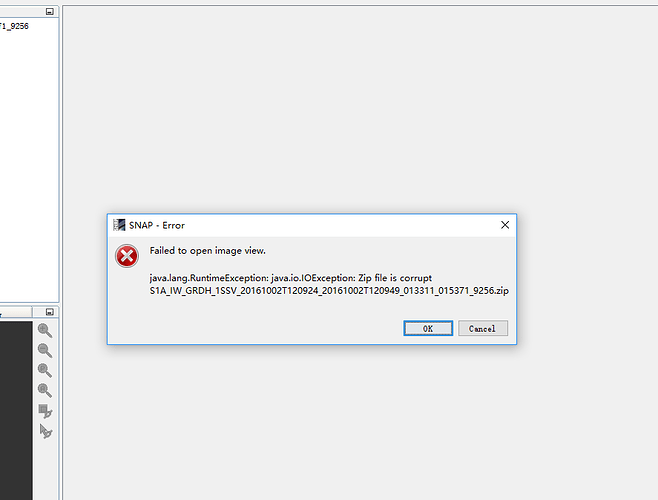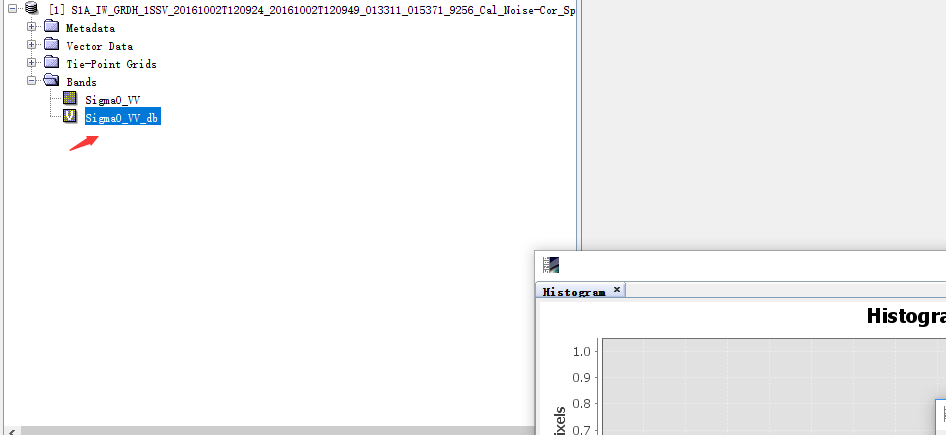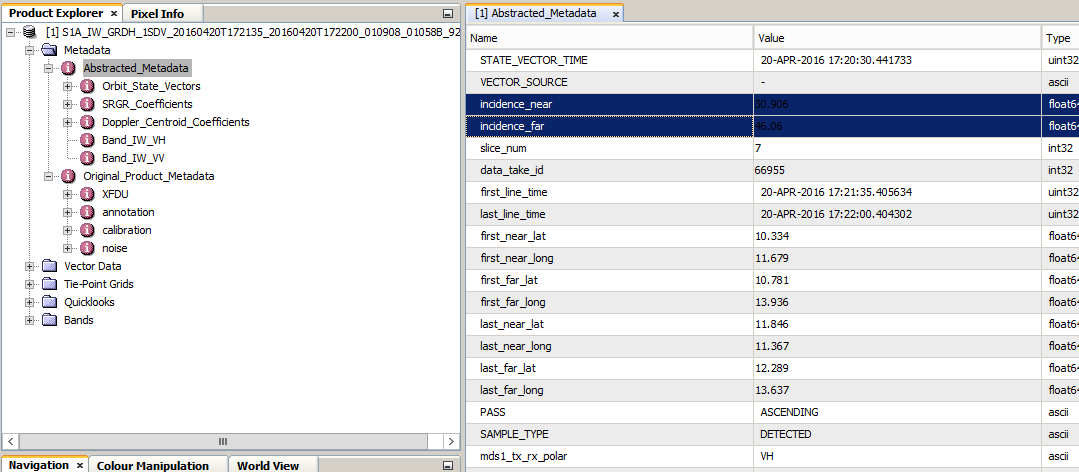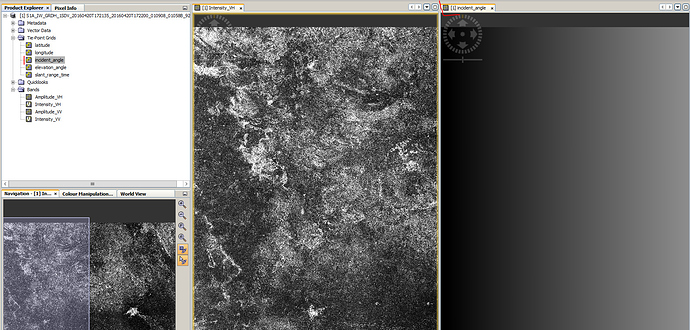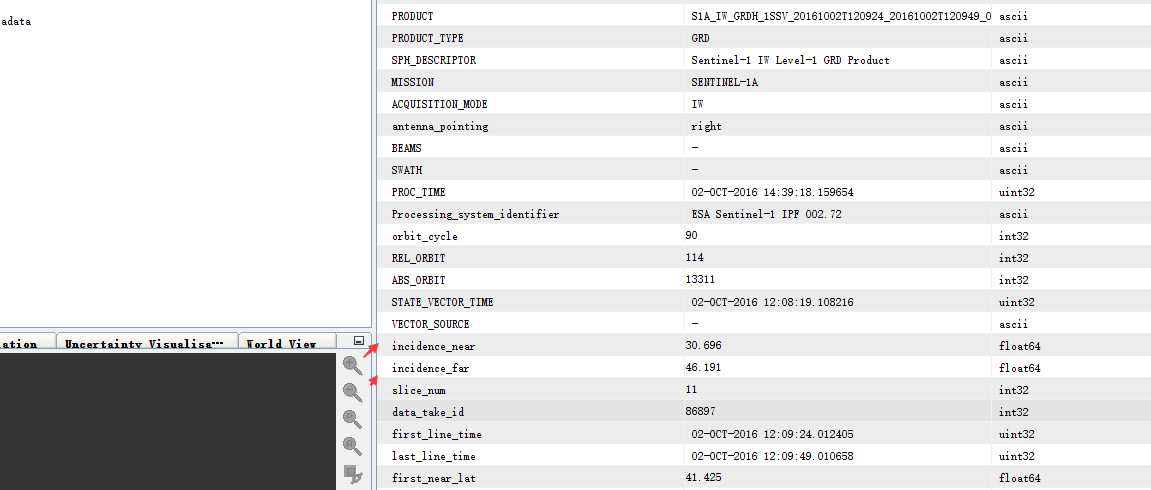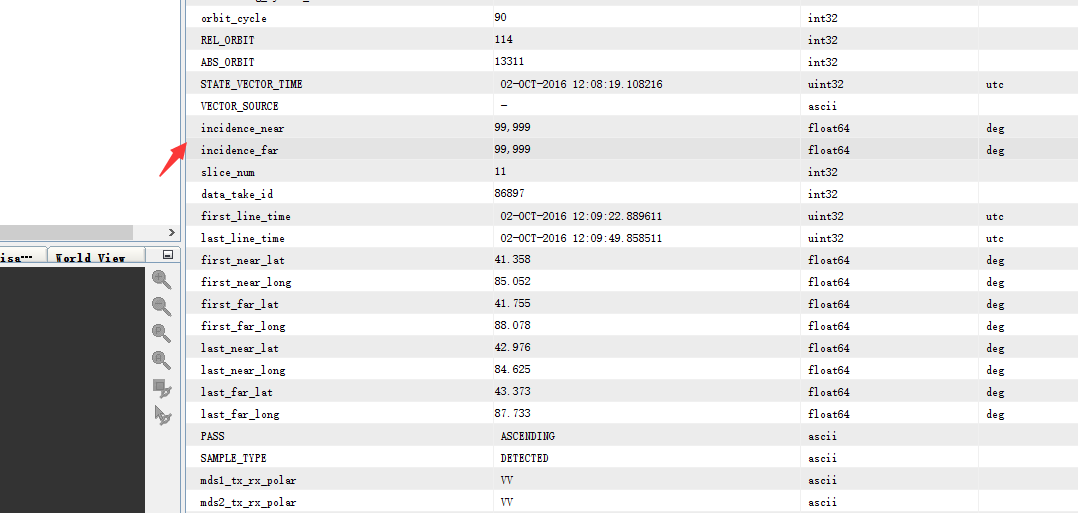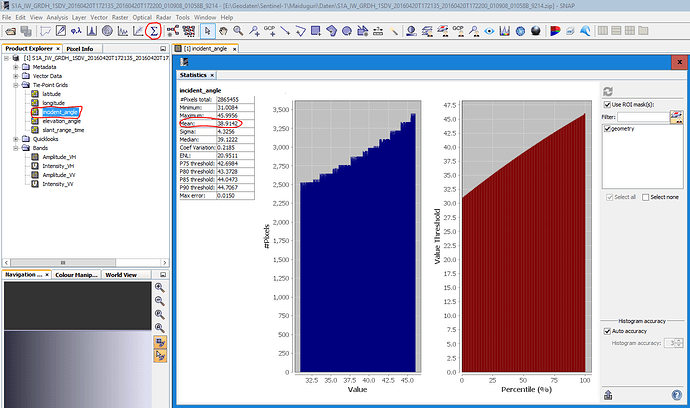Dear all:
I first used this software ,When I do radiometric calibration in this problem, some people know how it is going on?
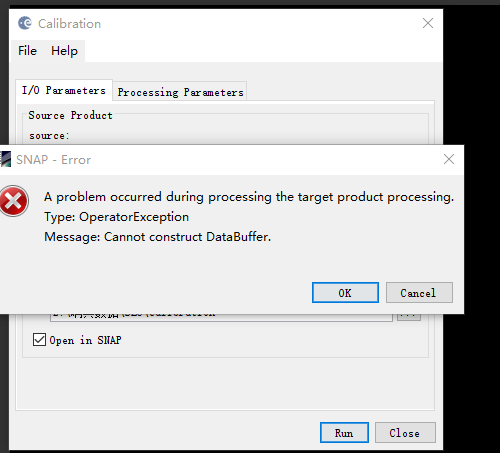
thank you all!
Looks like you have a problem with Java heap space. You need to allocate more memory to SNAP. This is especially true when processing SLC data, which tends to be huge. Check your setting for the VM parameters option (Tools -> Options -> Performance tab -> System VM Parameters.
thank you very much,what i do next? how allocate more memory to SNAP.too much trouble for you:slight_smile:
You have to increase -Xmx4096m (i.e. 4 Gb of RAM) to a higher value, e.g. -Xmx8192m (8 Gb). Hopefully, your machine has that amount of RAM, otherwise you have to look for alternatives.
@glemoine Thank you very much. My problem is solved.
hello ,
Again to give you too much trouble.when I open IW GRD data this problem occurs.Do you know why?thank you!
Something may have gone wrong with the download (probably broke off), so your ZIP is not complete. Not unlikely, given the current quality of scihub/apihub access. Check with simple unzip -l on command line. Re-download if indeed corrupt.
@glemoine Thank you,Re-download solved the problem. Do you know ,how to find Backscattering Coefficients through SNAP?or though others software to achieve.
The backscatter coefficient (also normalized radar cross-section) is expressed as Sigma0 or σ0.
You can calculate it directly with the Calibration tool.
@ABraun Thank you for your quick reply.The backsactter coefficient Generally negative, why do so for a positive value?
if you calculate it in db it roughly ranges between -40 and +10.
Please see also here:
@ABraun Thank you so much. How to output Sigma0db imges in SNAP?
V means that is a virtual band: Right click > convert band and then menu > file > save product.
Then it is written on your hard drive permanently and you can export it in any format.
@ABraun Thank you . Do you know, how to know the incident angle of radar wave in SNAP? or by other means know。
incidence angle is dependent from the distance to the sensor.
So there is always a difference between the far and the near range.:
You find it under Abstracted_Metadata:
If you want the incident angle of a specific pixel, you can open it as a Tie-Point-Grid:
this is because the raster cells in the near range are hundreds of kilometers closer to the sensor than the ones in the far range. Due to the side-looking geometry of the SAR sytstem, the angles differ so much in large data sets.
If you want the average angle of the whole image open the image statistics of your incidence angle image:
But if you need the angle for the computation of certain derivatives I highly recommend the band maths function using the incidence angles (activate ‘tie point grids’)
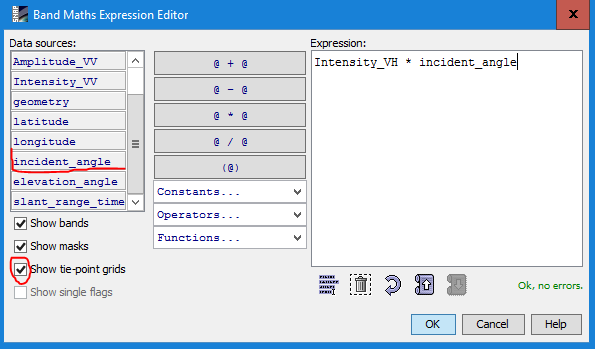
@ABraun You answer is so professional.I understand,thanks for your help . 
The 99999 value in the metadata can mean the value was not filled in by the reader. What kind of product is this?
